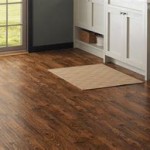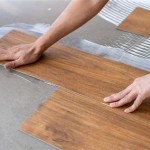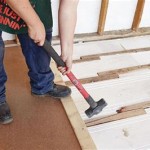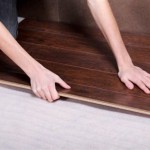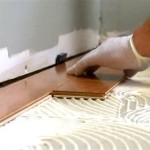Transform Your Kitchen With Laminate Flooring
Laminate flooring is a cost-effective and durable option for transforming the look of your kitchen. Its versatility, ease of maintenance, and ability to withstand moisture make it an ideal choice for this high-traffic area.
Benefits of Laminate Flooring in Kitchens:
Durability: Laminate flooring is resistant to scratches, dents, and moisture, making it highly suitable for kitchens where spills and foot traffic are common.
Water-Resistance: Unlike hardwood flooring, laminate flooring has a protective layer that prevents water penetration, making it a practical option for kitchens prone to spills and humidity.
Easy Maintenance: Laminate flooring is easy to clean and maintain. Regular sweeping or mopping with a damp cloth is sufficient to keep it looking its best.
Variety of Options: Laminate flooring comes in a wide range of colors, styles, and textures, allowing you to customize your kitchen to match your decor and personal preferences.
Choosing the Right Laminate Flooring:
When selecting laminate flooring for your kitchen, consider the following factors:
Thickness: Aim for flooring with a thickness of at least 8mm to ensure durability and stability.
Wear Layer: The wear layer, which protects the flooring from wear and tear, should be rated AC3 or higher for kitchen use.
Slip Resistance: Choose flooring with a slip-resistant surface to prevent accidents in wet conditions.
Moisture Resistance: Look for flooring with a moisture-resistant core or backing to prevent water damage in the event of spills.
Installation:
Laminate flooring is generally easy to install, but it's recommended to consult a professional if you're unfamiliar with DIY projects.
Steps:
1. Prepare the subfloor by ensuring it is level, dry, and free of imperfections.
2. Lay down an underlayment to enhance cushioning and sound insulation.
3. Assemble the laminate planks by snapping them together at the edges.
4. Trim and cut planks as needed to fit the shape of your kitchen.
5. Secure the flooring along the edges with moldings or baseboards.
Maintenance:
Maintaining laminate flooring in your kitchen is simple:
Daily Cleaning: Regularly sweep or vacuum to remove dirt and debris.
Weekly Cleaning: Mop with a damp cloth and a mild cleaning solution or laminate floor cleaner.
Avoid Harsh Cleaners: Avoid using abrasive cleaners, steam mops, or excessive water, as these can damage the flooring.
With proper maintenance, laminate flooring will provide lasting beauty and functionality to your kitchen for years to come.

All You Need To Know About Laminate Kitchen Floors Wren Kitchens

All You Need To Know About Laminate Kitchen Floors Wren Kitchens

Choosing Laminate Flooring For Your Kitchen Tarkett

5 Big Lessons I Learned From Turning My Outdated Kitchen Into A Dream Space

Which Flooring Is Best For A Kitchen At Blog

6 Ways To Transform Your Traditional Kitchen A Modern One Ajmanproperties

Can You Replace Kitchen Flooring Without Removing Cabinets

Kitchen Flooring Guide How To Choose Your Perfect Floor

Transform Your Kitchen With Stunning Walnut Floors

Flooring Materials To Consider Forbes Home
See Also
